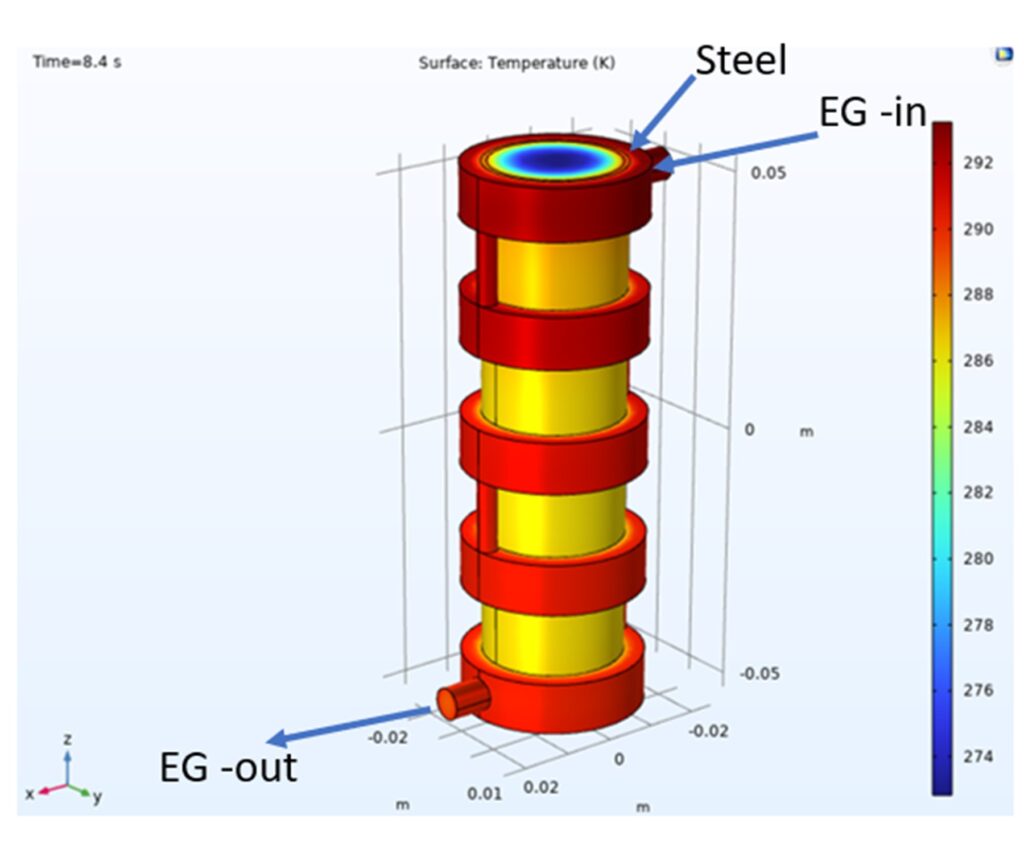I specialize in evaluating complex and unconventional thermal systems using a combination of theoretical principles, simulation tools, and practical insights. Whether it’s high-precision cooling for electronics, energy recovery solutions, or novel heat exchanger configurations, I apply a systems-level approach to identify inefficiencies, optimize performance, and ensure reliability. My work bridges advanced thermal modeling with real-world process constraints—enabling innovative, data-driven solutions tailored to each unique application.

One of the recent analyses I conducted focused on a unique thermal system within the emerging field of solid-state refrigeration, specifically using barocaloric materials. This technology leverages the temperature change that occurs in a phase-changing material when it is subjected to external hydrostatic pressure. The heat generated during this phase transition can then be effectively transferred to a secondary circulating refrigerant, forming the basis of a novel refrigeration cycle.
To simulate this system, I used COMSOL Multiphysics and developed a model that couples material-level behavior with external heat transfer mechanisms. The simulation integrates three distinct physical domains: the application of hydrostatic pressure (mechanical physics), the heat generation due to phase transition within the material (material-level physics), and the subsequent heat transfer to the surrounding fluid medium (thermal and fluid mechanics). By combining these physics into a single model, I was able to analyze the dynamic interaction between the material’s internal response and the external thermal system, providing valuable insights into system efficiency and performance optimization.
